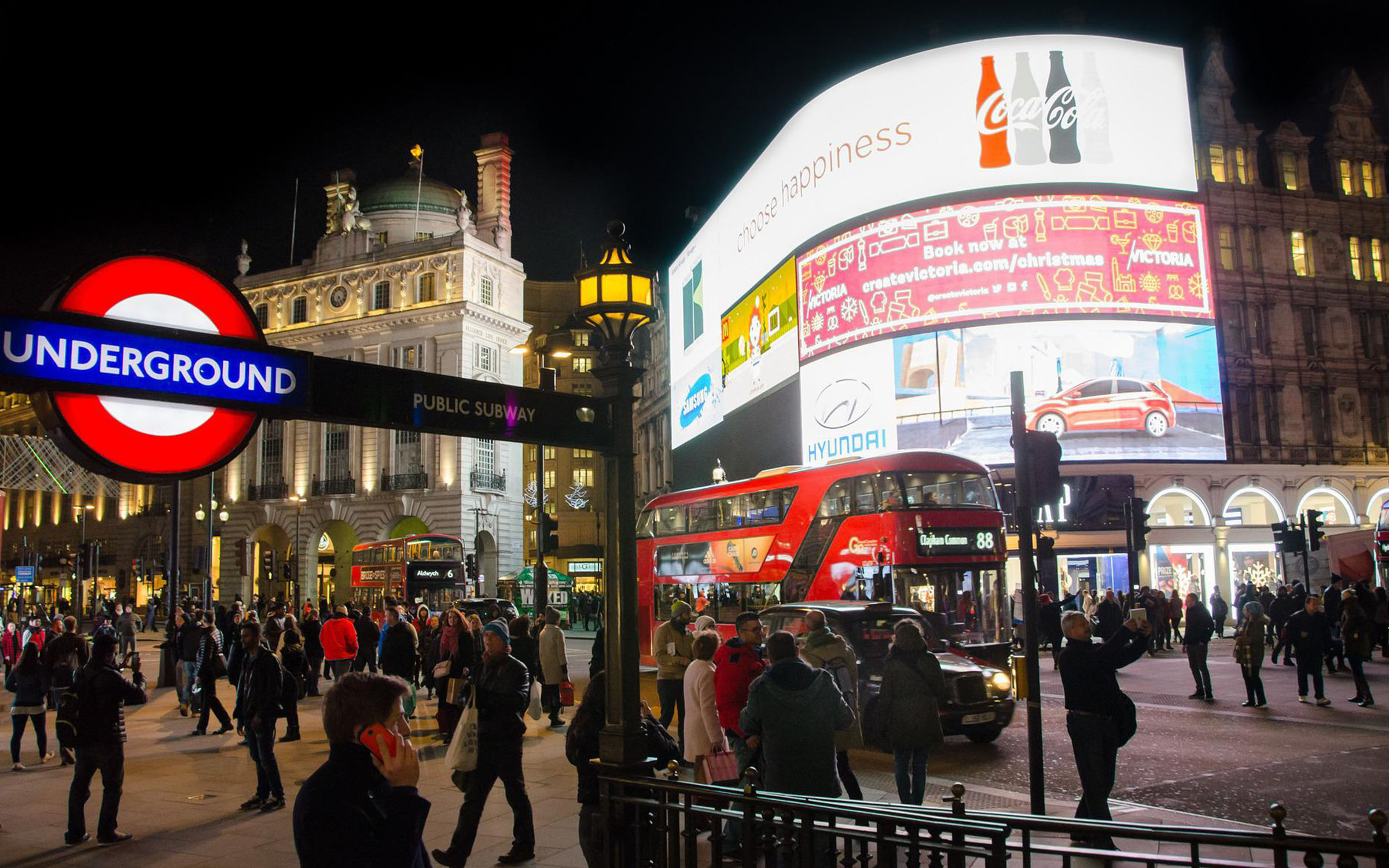Let’s look at how digital signage can help improve your business…
Signage has evolved massively in the past few years. From the billboard posters of the past to rolling displays, digital signage is the next logical progression. The large advertising screens which dominate Times Square, Leicester Square and Hollywood Boulevard are primarily digital signs.
Using transitional imagery, moving images and video, giant global soft drink and sports brands emblazon their slogans across the cities of the world.

Digital Signage – Just Do It
Few businesses have the advertising budget of these conglomerates, nevertheless the technology is steadily becoming accessible to smaller businesses looking to promote their brand or interact with visitors in an efficient manner.
Whether checking your car into a private car park or making an appointment for a haircut, digital signage solutions are becoming increasing familiar in our public lives. Displayed using a high-definition LCD and LED screens, the content is fed by a media player such as a Windows PC, Mac, Raspberry Pi or dedicated server which filters from one screen to another. There is no limit to the multi-faceted applications in which digital signage can be used. Depending on the application, screens can also be set to emit sound to accompany images, videos and text, screens can also be made fully interactive.
Digital Signage – I’m Lovin’ It
Many of us are familiar with the freestanding totems now common place in many fast-food restaurants. Equipped with touch screen capacity, diners can order and even pay for their meal. The introduction of this technology has helped restaurants to handle greater numbers with increased efficiency, ensuring customer satisfaction.
To support this hardware, specialist software is required. Typically, no two commissions are the same. For this reason, an entire industry exists within the software sector to support digital signage.

1 Location
Choosing the right location for your digital sign is the most important factor. Choose a prominent site for your totem or sign where it can be easily seen. In the case of interactive signs, allow for space for people to congregate around it, providing ample passing room for other people on the concourse.
Size2
From a 32” screen to the whole side of a building, digital signs can vary massively in size. How big you make your sign will depend upon how visible it needs to be from a distance and how much information you need to convey.
Imagery3
Images, logos and pictures within a digital sign need to be eye-catching but not gaudy, relevant to the brand and sector. For instance, a high value jeweller would not use pink and green borders to highlight their sign as it would devalue their black and gold branding.
Content4
Keep it simple, be concise but informative. Find the right balance between jargon and patronising over-explanation. Always proofread all written content carefully to ensure there are no mistakes as this can undermine your brand’s authority.
Software5
Find the right software partner to create and support your sign. It is pointless spending thousands of pounds on a screen if you then buy a second-hand Windows 7 PC with an inexpensive wallpaper transition, doing so can cause damage to your brand and its standing.
Management6
Controlling digital signs, can be as straightforward as connecting a keyboard to the machine itself or can be operated remotely. For larger companies, it is critical to have uniform branding across all sites. This can easily be managed remotely, an operator can connect to each portal remotely via the network to change, update and control messaging.
To discover how digital signage can revolutionise your business, create greater efficiency and reduce costs, speak to our expert team at Teksmart® today.



